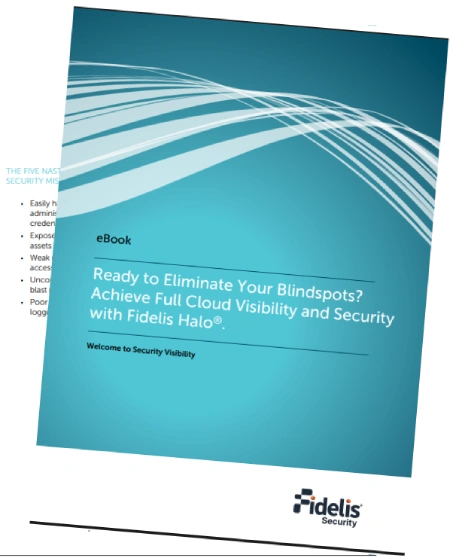Traditional asset inventories list what exists—they don’t reveal why an asset is critical or how it might be attacked. With threats constantly evolving, teams need context: Which assets hold sensitive data? Which are actively targeted? Without this, efforts like patching or monitoring are unfocused and inefficient. Context-driven asset profiling aligns defenses with real risk—saving time, money, and reputation.
This blog explains why static asset lists fall short, how intelligent profiling transforms risk-based vulnerability management, and how Fidelis Elevate delivers these capabilities—authentically, with real results.
Why Is Static Asset Profiling Insufficient Today?
Asset inventories are often outdated, decoupled from threat data, and siloed—leaving security teams blind to critical risk.
Outdated Inventories Hide Emerging Threats
Relying on spreadsheets or “onceaweek” scans means you’re always a step behind. Imagine a cloud VM spun up yesterday with no patches—yet your tools won’t even know it exists until your next scheduled run. By the time you discover it, that VM may already be compromised. Real-time visibility is what keeps you ahead of fastmoving threats.
CVSS Only Prioritization Misses the Bigger Picture
Not every “10.0” vulnerability should jump to the front of your queue. If a minor bug on a lab server scores high on CVSS, it might divert your attention away from a medium rated flaw live on your customer facing database. Context—like asset criticality and actual exposure—should guide what gets fixed first. Contextual risk scoring turns raw CVSS numbers into meaningful action.
No Insight into How Attacks Really Unfold
Listing vulnerabilities one by one is like seeing puzzle pieces without the picture. An attacker chaining two separate exploits can slip through gaps, but standard tools only flag each flaw independently. You need to understand how those pieces connect to see the full threat path. Visualizing the attack chain is essential for closing the real gaps.
Effort Wasted on Low Value Assets
When every device is treated the same, you burn resources on machines that barely matter—while your most sensitive systems sit under protected. Think of a dev box hogging monitoring capacity, leaving your core database with minimal oversight. Focusing on high value assets maximizes both efficiency and security impact.
How Context Driven Asset Profiling Strengthens Risk Mitigation
Real-time, context-rich profiling shifts your strategy from reactive to precise—supporting smarter scanning, monitoring, and protection.
1. Every Shift in Your Environment Feels Like a Blind Spot
New virtual machines launch, containers spin up, and remote endpoints connect—often without notice. Until those assets show up in your inventory, they sit unprotected and unmonitored.
For example, a developer might provision a cloud instance for testing after hours. Without continuous profiling, that server remains off your radar until the next manual scan.
Profiling in real time ensures nothing slips through unseen, so you’re never caught off guard.
Achieve Deep Visibility
Comprehensive evaluation of infrastructure components
Reduce Risk and Satisfy Regulatory Standards
2. Treating All Risks the Same Leaves You Exposed
A single CVSS score can’t capture an asset’s true importance or exposure. Without context, minor and critical vulnerabilities blend together, causing your team to chase distractions.
Imagine a low-severity flaw buried in a sandbox environment scoring higher than a mid-severity issue on your live customer database. The sandbox flaw consumes precious patch cycles while your production data stays at risk.
Context-driven scoring puts your most valuable assets first, making every remediation effort count.
3. Not Knowing the Paths Attackers Could Take Creates Dangerous Gaps
Vulnerabilities rarely exist in isolation—attackers chain flaws to escalate access. If you can’t see how one weak link leads to another, you’ll always be reacting rather than preventing it.
For instance, an unchecked misconfiguration in a staging network might offer the stepping stone that turns a minor exploit into a full breach. Spotting these chains in advance lets you intervene before an attacker ever moves.
Simulating those routes gives you the map you need to close gaps before they’re weaponized.
4. Manual Defense Choices Slow You Down
When every alert feels urgent, assigning monitoring or extra protection by gut instinct leads to mistakes. High-risk assets may still slip through, while low risk systems get overprotected.
Picture a critical server under active attack that never triggers stronger containment simply because someone forgot to flip the switch. Meanwhile, a nonessential workstation has layers of unnecessary controls.
Automating defenses based on real-time risk means the right assets get the right protection exactly when they need it.
What Fidelis Elevate Actually Delivers?
Fidelis Elevate’s Active XDR platform is built on context-driven asset profiling that delivers:
Continuous asset mapping across on-prem, network, endpoint, cloud
Asset classification by role, OS, vulnerabilities, and criticality
Real-time risk scoring combining vulnerability severity, threat intel, and business impact
Attack path simulation modeling how threats may traverse your environment
Machine learning–driven anomaly detection based on established asset behavior
Automated defense workflows: containment, deception, and policy adjustments triggered by asset risk
These aren’t hypothetical—they’re documented capabilities of the Elevate platform. Drawn from official sources, each function helps shape precise risk-based vulnerability management.
Example: Asset-based Remediation in Action
A critical database shows normal operations—but sophisticated attackers start probing it. Elevate observes unusual access patterns via its ML engine and correlates them with threat intelligence. The asset’s risk score spikes. In response, an automated workflow directs monitoring resources, deploys deception around that database, generates a ticket, and alerts the response team—all without human input. That’s context-driven mitigation, live.
Comparison Table
CapabilityWithout Context-Driven ProfilingWith Fidelis Elevate
Asset visibilityManual, snapshot-basedContinuous, auto-updatingRisk prioritizationCVSS/timing-basedContextual, threat-awareAttack path awarenessBlindSimulated, proactiveResource allocationUniform or randomDynamic, risk-basedDefense automationManual ticketing and remediationsPolicy-driven automation
Moving beyond static asset inventories empowers organizations to defend smarter. Context-driven asset profiling aligns vulnerability management and threat detection with real-world risk—saving time, strengthening defenses, and reducing exposure. Fidelis Elevate provides all the components needed: real-time mapping, contextual risk scoring, simulation, intelligent detection, and automated defenses.
Talk to an expert or request a demo to see how context-aware asset profiling can transform your risk-based security strategy.
The post How Can Context Driven Asset Profiling Transform Your Risk Mitigation Strategy? appeared first on Fidelis Security.

No Responses